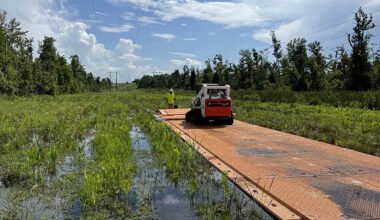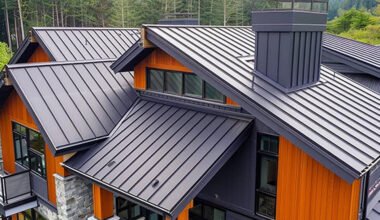The landscape of industrial design and construction is undergoing a transformation. Heightened by the advent of new technologies, the demand for sustainable practices, and the need for cost-effective solutions, the industry faces a compelling push towards innovation. In this context, we delve into the significant shifts shaping the future of infrastructure, emphasizing how they are revolutionizing industrial design and construction.
Embracing Technological Advancements
Technology has always been a driving force behind change, and the construction industry is no exception. From Building Information Modelling (BIM) to 3D printing and autonomous machinery, the way structures are designed and built is evolving rapidly. BIM, for instance, allows for the creation of digital representations of physical and functional characteristics of facilities, thus improving decision making across the entire construction process.
Implementing Sustainable Practices
Sustainability is no longer just a buzzword but a necessary pivot in all sectors, especially in construction where the environmental impact is significant. The integration of green building materials, renewable energy sources, and waste reduction strategies signifies a responsible approach towards the environment and a commitment to the planet’s future.
Adopting Prefabrication and Modular Construction
The concept of prefabrication and modular construction is rapidly gaining traction. These methods not only speed up the construction process but also offer quality control and reduce labour costs. The result is a shift towards more efficient building practices that hold the potential to meet the demands of both the present and future infrastructure needs.
Enhancing Safety Through Innovation
Another critical aspect of the future of industrial design and construction is the focus on safety. Innovative equipment, wearables, and safety apps are becoming more prevalent on construction sites. These tools aim to reduce accidents and ensure the well-being of the workforce, which is paramount for the industry’s progress.
Prioritizing User Experience
User experience is becoming an integral part of industrial design. The future of construction demands spaces that are not only functional but also improve the quality of life for its inhabitants. This means that designers and builders must focus on creating structures that cater to the needs of those who will use them, considering aspects such as natural lighting, ergonomics, and spatial aesthetics.
Fostering Collaboration
Cross-disciplinary collaboration is key to fostering innovation in construction. Architects, engineers, contractors, and technologists must work together more closely than ever to achieve the common goal of building smarter infrastructure. This collective effort is essential in overcoming complex challenges and reaching new heights in construction excellence.
Investing in Research and Development
Investment in research and development is crucial for propelling the industry forward. Groundbreaking materials and techniques can only be discovered through rigorous experimentation and exploration. As R&D is given the spotlight, the construction industry will witness new possibilities in building design and functionality.
Advocating for Policy Changes
The construction industry must also adapt to the changing regulatory landscape. Advocating for policies that support innovation and sustainable development is vital. This includes working with government bodies to establish a regulatory framework that encourages new ideas and technologies while ensuring safety and environmental protection.
Integrating Smart Infrastructure
The concept of smart infrastructure is rapidly gaining ground. The integration of IoT devices and intelligent systems into buildings and construction processes not only enhances efficiency but also paves the way for smarter, more responsive structures. The use of sensors, for instance, can lead to better monitoring and maintenance of infrastructure, ultimately prolonging its lifespan and reducing costs.
Challenges and Opportunities
Despite the promising outlook, the road to revolutionizing industrial design and construction is fraught with challenges. Resistance to change, skill shortages, and high upfront costs of new technologies are some of the obstacles to be addressed. However, these challenges present an opportunity for the industry to innovate and advance.
Preparing the Workforce
As the industry evolves, so does the need for a skilled workforce that is adept at new technologies and practices. Comprehensive training and upskilling programmes are essential to ensure that professionals are equipped to handle the complexities of modern construction projects.
Conclusion
The future of infrastructure is bright, with boundless opportunities for those willing to embrace change and innovation. Technology, sustainability, and collaboration will be at the heart of the transformation in industrial design and construction. As we look forward to this exciting era, it is imperative for the industry to adopt a forward-thinking mindset, where the focus is on creating lasting value and developing infrastructure that not only meets but exceeds the demands of the modern world.
Looking Towards a Sustainable and Innovative Future
In conclusion, the industrial design and construction landscape is set to gain immense benefits from the advancements that are revolutionising the industry. By championing innovation, prioritizing sustainability, and preparing the workforce for future challenges, the sector is poised for a vibrant future that promises to reshape the built environment for the better.
Whether it is by leveraging cutting-edge technologies or adopting sustainable practices, the industry’s trajectory points towards a future where innovation is the cornerstone of success. All stakeholders must therefore collaborate and contribute to building an ecosystem that is robust, resilient, and ready for the challenges of tomorrow.



